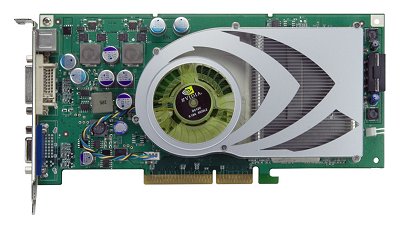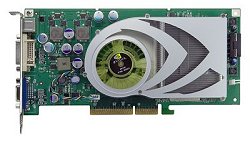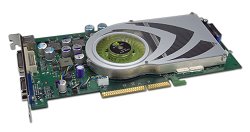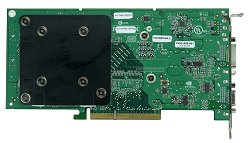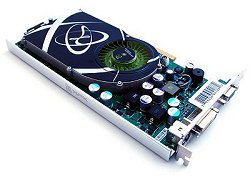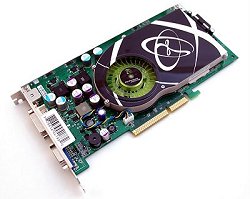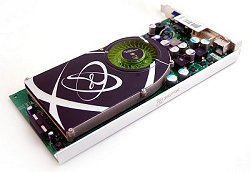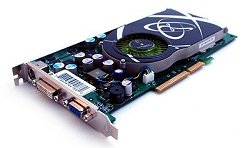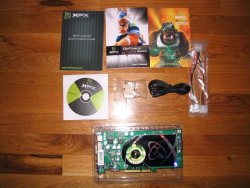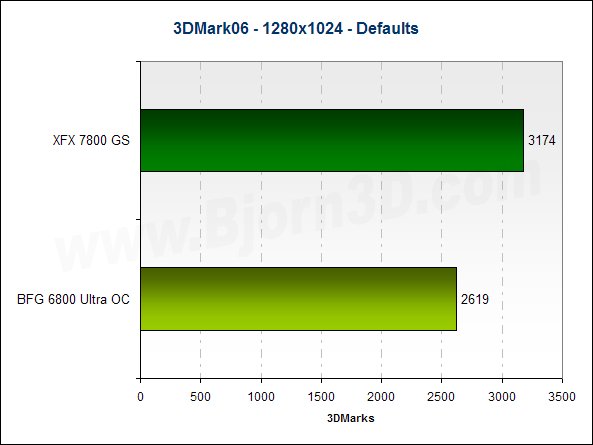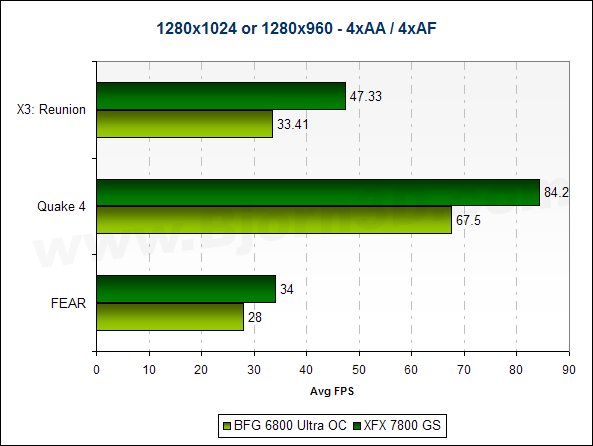Today NVIDIA gives AGP users another weapon to use to win in playing games. We put the XFX 7800GS up againts a BFG 6800 Ultra OC.
Introduction
Today, NVIDIA is releasing the GeForce 7800 GS AGP GPU. The reason for this launch is that end-users are not moving to the new PCI Express platform as fast as the company thought they would. So, with that happening, NVIDIA is bringing those users who do not have the funds or are not ready yet to take the plunge to get a new motherboard, CPU and GPU a GPU that will prolong the life of their systems.
This is also a hard launch of the NVIDIA GPU; Best Buy is supposed to have them this weekend and e-tailers on Monday February 6th. The card we are looking at today, though, is from XFX, and they informed me they will be in stock at e-tailers TODAY! Of course I am writing this a few days before the announcement, so we hope we will see that kind of delivery from XFX.
The card from XFX has an MSRP of $349.00, but I am guessing we will see them for less online. Also XFX has upped the cards GPU core speed and memory speed. They have taken the core from NVIDIA’s reference of 375MHz to 440MHz and raised the memory from NVIDIA’s 600MHz (1200 effective) to 650MHz (1300 effective). All that with what has to be the best warranty on the market — Double Lifetime. The Double Lifetime warranty is if you register the card online you will get a lifetime warranty. If you then later sell the card and that user registers the card, he gets a lifetime warranty. The card can only be registered twice, but in all reality, this gives the card a true lifetime warranty since cards do not get sold that many times.
Specifications & Reference Board Shots
In the table below, you can see the basic specifications of the NVIDIA reference 7800 GS, the XFX 7800 GS that I have on hand, and the BFG 6800 Ultra that I will be comparing the XFX 7800 GS to.
| NVIDIA 7800 GS | XFX 7800 GS | BFG 6800 Ultra OC | |
| Graphics Bus Technology | AGP 8X | AGP 8X | AGP 8X |
| Memory Interface | 256-bit | 256-bit | 256-bit |
| Memory | 256MB GDDR3 | 256MB GDDR3 | 256MB GDDR3 |
| Core Clock | 375MHz | 440MHz | 425MHz |
| Memory Clock | 1.2GHz | 1.3GHz | 1.1GHz |
| Pixels Pipes | 16 | 16 | 16 |
| Vertex Shaders | 6 | 6 | 6 |
Here are some shots of the NVIDIA reference 7800 GS AGP board.
Closer Look & Bundle – XFX 7800 GS AGP
Let’s take a quick look at the actual board being tested today. XFX only made a couple changes from NVIDIA’s reference design: the cooler is covered with an XFX design and the top of the card features the metal piece XFX has been using on its 7 Series cards.
The metal strip helps the board stay rigid and actually helps a bit with pushing the card in during installation. XFX’s slight changes turn the dull reference design into a slick-looking card. You can see in the second picture below that the card features three output connectors: DVI, VGA and TV-out. You may also have noticed the power connector in the pictures. NVIDIA says that the 7800 GS requires a 350W power supply.
The XFX 7800 GS AGP card comes in one of XFX’s signature X-shaped boxes. Along with the card, you get a driver CD, DVI-to-VGA adapter, S-video cable, power cable, Quick Installation Guide, and User’s Manual. Nothing very exciting there.
Test System & Benchmark Results
In order to get a feeling for the true power of this card, I decided to put it head-to-head against the BFG 6800 Ultra OC, the most powerful AGP card I had on hand (that is, until the XFX 7800 GS arrived of course). Rather than showing a bunch of benchmarks at different resolutions and different antialiasing / anisotropic filtering settings, I went straight to the highest resolution for the LCD I was using (1280×1024) and cranked up the eye candy.
Here are the components used in my test machine.
- Asus SK8N nForce3
- AMD Athlon 64 FX-51
- 2x 1GB Legacy ECC DDR 3200
- 2x 36GB Raptors in RAID 0
- DVD Drive
- Samsung Synchmaster 915N LCD
- Windows XP PRO SP2
- ForceWare 81.98
Let’s start with a quick look at 3DMark06 at the default settings.
Now, let’s see how the XFX 7800 GS does in some recent games.
Conclusion
As you can see, the XFX 7800 GS easily outperforms the BFG 6800 Ultra OC it was compared to. This means that it would be a worthwhile upgrade for anyone with a 6800 GT or even a 6800 Ultra. We also saw it compare very well against an XFX 7800 GT and Athlon 64 3800+.
So if you want to stay with your AGP system but want a better card, I see no reason to look any farther than the XFX 7800 GS. It should handle your gaming just fine.
Pros:
+ Lets AGP users hang onto their systems a little while longer
+ Price of $349.00 MSRP not too high for a good performing card
+ Single slot
+ Great performance
Cons:
– Fan can get a little noisy
Final Score: 9.5 out of 10 and the Bjorn3D Golden Bear Award
 Bjorn3D.com Bjorn3d.com – Satisfying Your Daily Tech Cravings Since 1996
Bjorn3D.com Bjorn3d.com – Satisfying Your Daily Tech Cravings Since 1996

